H
H H H H H H H H H H H
H H H
H&D: [see Hibbard & Darrin].
Haartz Jonarts: A U.S.
Manufacturer of convertible top material. In early 1999 I got this e-mail message from Mr.
Eric Haartz, a member of the Haartz family who supplied much of the soft top material used
on Cadillac cars for decades: "...we still have a pretty decent sample archive,
at least back to the mid-twenties. I noted your definition of Burbank material
[see section A - C] and wanted to point out that there was a Burbank
cotton canvas imported from Great Britain to the U.S. by Laidlaw & Co. of New York.
This canvas was tightly woven cotton with no coating at all. As best as I can
determine, Laidlaw was importing this by the late teens and continued to offer it to the
American car industry until the mid- or late thirties. I have a couple of their
sample books from about 1931, so there is no ambiguity about the nature of the material.
If this information is of interest, I might be able to gather a bit more on this as it
relates to Cadillacs and La Salles. I would be glad to help you with other questions
relating to our Haartz top materials, and those from other makers. You can contact
me by e-Mail via jonats@haartz.com." He adds, "The glossary that you have compiled is
wonderful. It is a great resource and makes fascinating reading."
Thanks, Eric, for the useful information as well as the kind compliments.
Haas, Alan (& Vicki): A Senior
Service Engineer with Cadillac, Alan is responsible for publishing and printing Cadillac's
service and owner manuals. A CLC member since 1983, he took over vice-presidency of the
club in 1991 and became its president shortly thereafter. He was one of the early
organizers of the company's museum, first at the Clark Street plant then at a new location
in Warren in the Fall of 1994. I was fortunate to meet him in September 1994. Al owns, inter
alia, one of the finest 1957 Broughams still in existence, the one formerly owned by
Cy Strickler of the now defunct Brougham Owner's Association (article in CLC, 2/91,
p.15).
Hard Rock (cafes): This
chain of casual dining establishments was founded in 1971 by Isaac Tigrett and Peter
Morton. The first one opened on Hyde Park, London. At this writing (2004) there are 143 of
them in no fewer than 36 countries. Apart from a decor filled with fifties and sixties
Rock 'n Roll ephemera, many of them also have put on display Cadillac cars ...or porrtions
thereof. Click here
to view the Web site my Australian friend Allan Levinson has devoted to them.
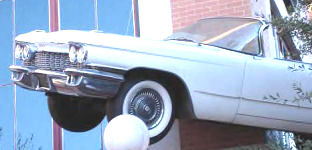 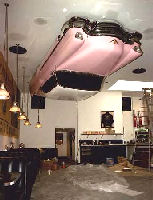
The image on the right is NOT from a Hard Rock cafe
...though the idea is there
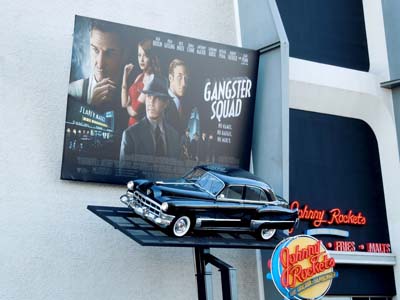
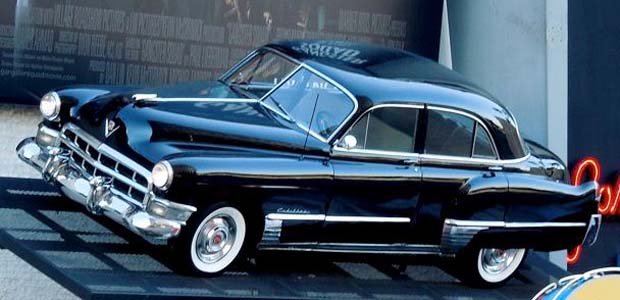
Like the Hard Rock cafes, this
movie billboard uses a full scale(?) 1949 Cadillac to attract its
patrons
Hare, Drew: Men of Cadillac;
chief designer (interiors) at Cadillac studio from 1974 and well into the eighties.
Harper's' and Harper's Bazaar:
Quality pre- and post-war US magazine that occasionally featured nice Cadillac-LaSalle
ads.
Hartmann, Willy: Little-known
Swiss automobile stylist and coach-builder; he built a streamlined body on the 1937 V16
chassis, probably inspired by a Delahaye 135MS he saw at the Paris Salon in October 1936,
with body by Figoni & Falaschi [the latter car was purchased by Aly Khan who had it
repainted maroon - photos in TQ1-2/84, pp.16-17]. I researched the history of the
Hartmann car and submitted the story to CLC; it appeared in CLCA 1990, cover +
pp.2-19. Other reading: NIT33, pp.46-49 [Lyons era]; SIA67, p.6; car shown
Geneva Motor Show, 1991, photos in "Barclay Fascination Cars" brochure. At last
news the Hartmann car had been sold to the Blackhawk collection at a Barrett-Jackson
auction (Jan. 1990) for a "cool" $1,400,000 !
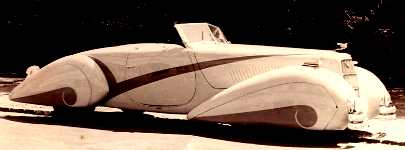 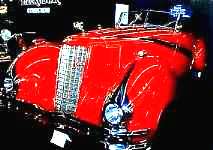
Left: the original, custom-built V16
at the new powner's home near Lausanne, in August 1937
Right: as restored (at least 3 times) and now (1999) located in the
Blackhawk Museum, CA
Hauser, Jon: [men of
Cadillac] He was an automobile stylist. Examples of 1941 styling development are shown in SIA,
9-10/1976, p.58.
Hayworth, Rita: American film
star; she, is reputed to have bought a special, 2-door sport coupe with body by Ghia of
Italy on the 1953 Cad chassis [see "Ghia"]. She
also got from her husband, the late Aly Khan, in 1936, the Delahaye 135M with body by
Figoni & Falaschi that inspired Switzerland's Willy Hartmann when he built his
aerodynamic convertible roadster on the 1937 V-16 chassis.
Hazard Warning Flasher: This
safety warning device was first used on the Cadillac in 1966.
Header bar: The front support
of a convertible or soft top that secures it to the windshield frame.
Headlights: These became
integrated in the front fenders with the 1941 models (a landmark year for Cadillac
styling).
Headlining: (upholstery term)
[and side lining] The inner lining of the roof area, rear quarter panels and rear roof
panel of a car.
Healy & Co., New York:
U.S. custom coach builders; they did a few bodies for the Cadillac in association with
Uppercu-Cadillac, one of New York's primary Cadillac outlets.
Heimburger, O.: Swiss
coach-builder from Basel, he built in 1924 a three-position landaulet, convertible Sedan,
town car [I have a photo from HW collection, taken from the brochure "50
Jahre/ans VSCI - USIC, 1919-1969" by Donald Brun].
Henderson, Dick: [men of GM]
He started with GM in 1952; by 1954 he was assisting Leonard McLay [see below] with
special show cars; he oversaw their building and often traveled with them on shows [see CLCA
1994, p.16].
Herald (Cadillac) Mascot:
[see "Mascots, Cadillac"].
Hercules: [see "Little Hercules"].
Heron: [see "Hood Mascots"].
Hershey, Franklin Q.: [men of
Cadillac] He was the designer, inter alia, of the 1948 Cadillac [see CA, 12/92,
p.14].
Hess, William ["Bill"]:
Bill Hess of Hess & Eisenhardt was a graduate of M.I.T. [Massachusetts Institute of
Technology]. He designed inter alia the Cadillac station wagons built by his firm in 1955
and 1956 under the supervision of GM and Cadillac.
Hess & Eisenhardt: A
renowned U.S. manufacturer of funeral cars, ambulances and service cars, many on Cadillac
chassis under label "S&S". The address of the Hess & Eisenhardt Company
appears on the rear cover of a 1953 product catalog as: Rossmoyne, Cincinnati, Ohio. In
1958 it was given as: Blue Ash Avenue, Cincinnati 42, Ohio. Willard
Hess, one of the founders of the company, died March 12, 2000 at the age of 94.
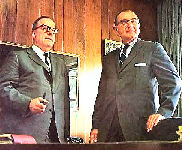
Willard Hess and Charles
Eisenhardt, the firm's CEOs
[ Photo from a product brochure of the sixties ]
Hibbard, Thomas (Tom): After
working for some time under Willie Brewster with Raymond Dietrich, the two designers set
up "Le Baron Carrossiers", a custom designing office at 2 Columbus Circle in New
York. In association with Howard A. "Dutch" Darrin, Hibbard made some bodies for
Cadillac before WW2. An H&D town car built on the 1928 Cadillac chassis for Fred
Fisher was shown at the New York salon in December 1927; another identical car was built
for Spencer Penrose [CLCA 1976, pp.16-17, also McC, p.125]. There is another
convertible Sedan drawing in CLCA 1989, p.8. I have also a photo of an H&D La
Salle Sedan [pre-war "custom" custom photo album].
Hibbard
& Darrin: Raymond Dietrich and Tom Hibbard started the Le Baron company in
1920, selling design ideas to be built by other coach-builders. Others were soon doing the
same: Brewster, Brunn, Derham, Judkins and newcomers Murphy, Don Lee. Cost of custom
bodies ranged from $5000 - $15000 (i.e. the cost of 12 to 26 model Ts). Photos of some
H&D designs may be seen in the "Dream Cars" section of the Database.
Hill, Ron: [men of Cadillac]
He was a GM designer; he joined the organization in October 1954 and the Cadillac studio
in January 1955; he was assistant chief designer in late 1955 or early 1956 under Ed
Glowacke. He worked particularly on the 1957 Eldorado Biarritz "in-board" fin;
in addition, he face-lifted the 1958 models, started on the 1959 models then was drafted
into the army. He returned to Cadillac briefly before moving to other units. There is an
article in CA 8/93, pp.72-77, and photos/ illustrations of some of his sketches in CA
8/93, p.74.
Hinges: [see "Door Hinges"].
"Histoire de
l'Automobile": A French-language book on automobile history.
History (Cadillac): In a 1927
booklet entitled "Cadillac & LaSalle", published on the introduction
of the new LaSalle models, the company gave some historical information relating to its
beginnings. I was stated that "The real beginning of the Cadillac Motor Car
Company" could be traced back to 1895 "when a manufacturer of high grade
machine tools in Detroit began [Leland and Faulconer], and continued operations
until his concern was absorbed by the Cadillac in 1905." The booklet said that "Another
important date" was 1899 which marked "the formation of the Detroit
Automobile Company, which started with the idea of building completed automobiles."
It was added that "In 1902, after two or three reorganizations, the company
assumed the name of Cadillac Automobile Company, and the name of Cadillac has been
retained although the title was changed in 1905 to Cadillac Motor Car Company."
According to this early Cadillac historic record, "In September 1902, work on the
first car with the name of Cadillac was started. The Cadillac organization, therefore, is
the oldest automobile company of Detroit. In fact the Cadillac has been called the Mother
of the Automobile Industry because so many organizers of other companies have sprung from
it." Another historical article appeared in CS11, pp.43-61 [photos: Dewar
Trophy, 4-cylinder motor, first V8, V16, V12, 1934 rear view, new 1949 V8, 1957 chassis,
1902/3 Model A, 1905 Model D, 1914 Type 51, 1920 Type 59, 1927 La Salle Series 303, 1930
V16 style 4264B, 1932 V8 Series 355B, 1933 Series 355C, 1934 V12 Series 40, 1936 V8 Series
60, 1937 La Salle Series 50, 1938 V8 "60S", 1938 V16 style 9029 convertible
Sedan, 1939 "75" convertible, 1940 "60S", 1941 Series 61, 1942 Series
63, 1946 Series 61, 1948 Series 61, 1949 Coupe de Ville ("millionth"), 1950
Coupe de Ville, 1953 "60S", 1953 Eldorado, 1954 Series 62 coupe , 1955 Eldorado,
1956 Series 62 Sedan, 1956 Eldorado Seville, 1957 Series 62 Sedan, 1957 Eldorado Brougham,
1958 "60S", 1959 Series 62 Sedan, 1960 Eldorado Brougham, 1960 Series 62 coupe
[shown as 1961], 1962 Series 62 coupe, "2.5 millionth" [shown as 1961], 1963
Sedan de Ville, 1965 "60S", 1967 Coupe de Ville, 1967 Eldorado, 1969 Fleetwood
Brougham, 1971 Fleetwood Eldorado [shown as Brougham] and 1971 Fleetwood Brougham [shown
as Eldorado].
Holls, David R.: [men of
Cadillac] He was former Director of Design at GM design studios. There is a good interview
in CA, 8/1990, p.16-17, and again in CA 6/92. I was honored to meet Dave in
Detroit in June, 1978. He graciously took time out to talk to me about Cadillac
styling on the very day of his daughter's wedding. I spoke to him briefly again on the
phone in September 1994 when I was visiting Detroit to prepare a book on Cadillac styling
at the request of French automotive writer Fabien Sabatés [that project was shelved in
1995 - I guess there were too many other books in the mill]. The last time I spoke to Mr.
& Mrs. Holls was when we met at the Barrett-Jackson automobile auction in Scottsdale,
AZ, in January, 1999. Dave had retired but he never missed an event related to old
cars. I was saddened to learn of his passing on June 16, 2000. This was reported in
Autoweek, 06.22.2000: Retired General Motors designer David Holls, who
co-founded the Eyes on Design classic car exhibition in Grosse Pointe, Michigan,
died of cancer June 16, two days before this year's event. He was 69. Holls joined GM
design under Harley Earl in 1952 and worked on the 1959 Cadillac, 1963 Corvette Sting Ray,
1966 Riviera, 1968 Corvette, 1970 Monte Carlo and 1970½ Camera [Camaro?]. After
a stint at Opel, Holls became head of advanced design, then director of corporate design
in 1986. He retired in 1991. An avid classic car collector, Holls co-authored the book, A
Century of Automotive Style--100 Years of American Car Design.
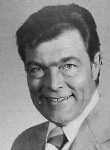
Hood
mascots: [see "Mascots, Cadillac"].

Hoods:
Hoods (Engine) [In England, the hood is called the "bonnet"]. In the late
twenties and thirties these were available in various plain or ornate styles.
- Plain: (without beading)
- Sculptured: with a bead molding curving in a
graceful arch from just aft of the radiator shell, across the top and down each side of
hood (e.g. V-16s with initial styling code digits "43"); these hoods are
sometimes referred to as the "scalloped" or "sweep panel" type; they
were first used on Cadillac models in 1928 (the story goes that Harley Earl
"borrowed" the idea from LeBaron);
- Special: special sculptured hoods were
available on request, and doubtless at extra cost, e.g. styling code No. 4257-A.
Hopkins, F.T: [men of
Cadillac] He was general sales manager from 1.1.1967 to 28.2.1978.
Horizontal power seat adjuster: A
2-way electric adjustment used on some post-war models with bucket seats (seat moves
forward or back).
Horse
Exchange (American): This was formerly located at the corner of 50th and Broadway,
in New York; it was the place where people bought and traded the horses they needed to
haul their business or pleasure carriages. The automobile began to oust the horse in the
early part of the century. Already in 1904-05 the corner of the building was occupied by
"Walter Automobiles". As they say, "the writing was on the wall."
Hot-Rod Cadillac: Many
enthusiasts have used the Cadillac motor to power their souped-up rods; I have photos of
such a vehicle taken in California in 1978.
House & Garden: Quality
pre-war US magazine that occasionally featured nice Cadillac-LaSalle ads.
House Beautiful: Quality
pre-war US magazine that occasionally featured nice Cadillac-LaSalle ads.
Howard, Edward. C: [men of
Cadillac] He was general sales manager from May 1912 to 1919; it is not known who was in
charge of sales between 1908 [when William Metzger's round ended] and 1912, but Howard
joined Cadillac in 1906 and became assistant sales manager in 1909.
Hydraulic brakes: These were
first used on 1936 Cadillac models.
Hydro-Lectric windows:
>>>>>
Hydra-Matic Transmission:
[spelled without the hyphen on the actual gearbox casing - photo CLCA92, p.16]
Cadillac began working on an automatic transmission design as early as 1932; by 1934 a
step-ratio gearbox was operational that would shift automatically under full torque.
Research continued at GM Central Research in 1935. Oldsmobile subsequently offered a
semi-automatic system on its 1937-1939 models and Buick on the 1938 models. Research and
development was completed in 1939 and a fully automated system was offered the following
year (1940) by Oldsmobile and one year later (1941) by Cadillac. By 1953 it was standard
issue in all Cadillac models. Dual-range Hydra-Matic was introduced in 1952 and the
auxiliary fluid coupling in 1956. In 1964 the old "Jet-Away" system of 1956 gave
way to the new "Turbo-Hydra-Matic". History, CLC 7/93, p.10; SIA20,
p.24-27; article "How it works", SIA86, p.56; first used by Oldsmobile in
1940 (SIA40, p.39); good articles, photos, tips [in French] in "Bond"
Nos. 16, 41, 43, 49, by Bernard Hogrel. CLC 3/91, p.15 has reproduction of
Hydra-Matic user instructions dated 1941. There is an article on the Hydra-Matic in
Automotive Industries for December 15, 1940, where it is reported to be available as of
the new year [1941]. The November 15 issue of same magazine mentions a transmission of
same name used in Oldsmobile, presumably in the 1940 models. This addition was
suggested by John Fobian, SAH member #2017: A blaze destroyed GM's Hydra-Matic
plant at Livonia, MI, in the fifties. The fire occurred August 12, 1953.
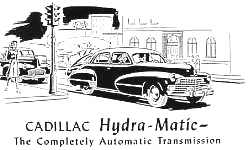
Boasting about the new Hydra-Matic transmission in
1942
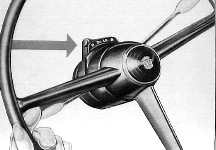 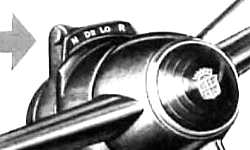
Hydra-Matic control lever and quadrant in
the 1946 Cadillac
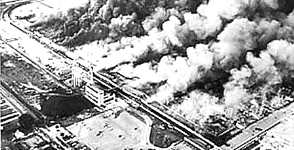
The blaze at the Hydra-Matic plant
Hydraulic Valve Silencers: Russell
"Rusty" Shepherd writes [1999] These were early hydraulic valve lifters
introduced with the V-16 in 1930 and V-12 in 1931. They were superseded by modern-type
hydraulic lifters in the 1936 en-block V8 and 1938 en-block 135 degree V16.
I I I I
I I I I I I I I I I
I I I I I I I I
Ibn Saud [Seoud?]: He was the
late king of Saudi Arabia and regularly bought scores of Cadillac automobiles [see Saoutchik, Jacques]. There is an article in AA
p.62 and photos in "Bond" 48 (p.84) of a wrecked 6-door limousine, one of 20
stretched 1950 "Harem Cars" he commissioned from Hess & Eisenhardt on the
1950 Cadillac commercial chassis.
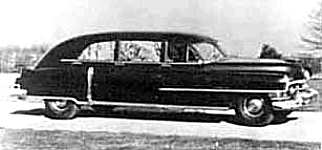
Ikuta, Yasutoshi: Japanese
author of "American Car Graffiti: Advertising - Automobiles", United States
Pictorial Works I, ISBN 0-87701-522-8 [or 451-5] {***};
Imperial: An enclosed body
featuring a fixed or mobile glass division between front (driver) and rear (passenger)
compartments [see "Division"].
Imperial cabriolet: A body
style classification used by Fleetwood starting in the late Twenties; it designated a
sedan with enclosed or blank rear quarters and a leather top covering simulating a
"cabriolet", that is a convertible, with its top up.
Imperial landaulet: V16 body
style designation, featuring glass division and opening roof portion over the rear seat
passengers. An interior view is included in an SEP advertisement of 2 April 1932
[bottom RH side].
Importers' Salon: Founded
just before WW1 and presented each year in New York, they were a showcase for the finest
European coach work of the times. They became an inspiration to American coach-builders to
create custom styles of their own.
Indianapolis: [see "Indy 500", below].
Indy 500:
Renowned US track racing event held each year at Indianapolis, the state capital of
Indiana. Cadillac and La Salle cars have frequently been the pace cars [opening the race]
or have been used in another official capacity at this popular event. A 1911 touring car
was used to open the track for time trials in 1973, in 1927 a series 303 La Salle was
used, in 1930 race officials used a one-of V-16 (style 4260A sport phaeton) - photo in TQ1-2/85,
p.17 - in 1931 the official pace car was a Cadillac series 370 V12 roadster, driven by
Willard Rader [see TQ1-2/85, p.10], in 1934 a series 350 La Salle was featured, in
1937 there was a series 50 La Salle, in 1973 the official pace car was a white Eldorado
convertible driven by Jim Rathmann (1960 Indy winner and Cadillac dealer in Melbourne,
Florida) and in 1993 a Cadillac Allanté opened the race again.
Inflator (tire, power-operated):
[see "Tire inflator"].
Inherently balanced engine:
Cadillac's inherently balanced engine was unveiled in 1924 and achieved a smoothness of
operation undreamed of earlier in the automobile industry. Its secret was a crankshaft
with compensating counterweights {from 1962 publicity piece in JMR collection}.
"In Search of Style":
Title of an article on Cadillac in CLCA 30th anniversary issue, p.53-58.
Inserts: (upholstery term)
The part of the seat cushion and back rest between the bordering bolsters.
Inside-Drive Limousine:
Cadillac's first fully-enclosed, chauffeur-driven limousine was built in 1914; previously
these cars had been open or partly open in the driver area.
Inskip, John S.: Formerly in
charge of Rolls Royce of America, in 4-story building on E. 64th Street, New York, he was
also a coach builder; he did at least one Cadillac town car on the 1940 Cadillac chassis [SIA23,
p.38 (color photos by Gene Babow) and SIA69, pp.32-35].
Inspection lamp: This useful lamp
on a long electrical cord was available starting with the 1916 models and was useful for
locating mechanical or other problems in the dark.
International Cadillac Meets [contemporary]:
These became popular in many European countries, starting in the eighties; my wife and I
organized one of our own, in 1984, near Geneva, Switzerland [as a matter of interest it
rained solid for two days!]. The best known of them are:
(a) Langeais, in Touraine, France; these
have been organized on alternate years by Magali and Geneviève Keyaerts, the lovely
daughters of the late Robert Keyaerts, a Belgian industrialist who assembled a fine
collection of older Cadillacs at his home, the Château de Planchoury. Here are photos
from some of the meets that have taken place there:

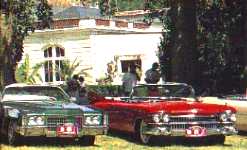 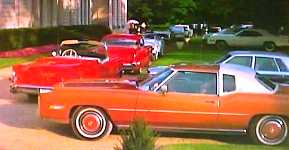
(b) Castelsarrasin, in SW France, near the
birthplace of the Antoine de Lamothe-Cadillac, founder of Detroit; these have been
organized almost every two years by Mr. Jacques Delbosc, a dental surgeon and admirer of
the Cadillac. Here are some of the meet posters:
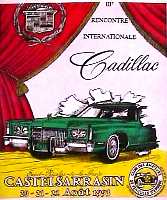 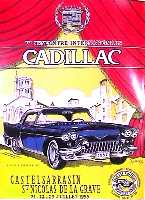
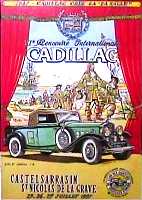
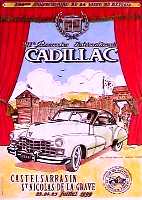
From L-R, the posters for the meets held in 1993,
1995, 1997 and 1999
(c) Zurzach, near Zurich, Switzerland; this has
become an annual event under the aegis of the Cadillac Club of Switzerland. Here, too, are
some photos:
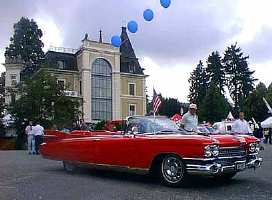 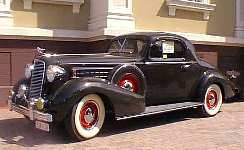
Left: a 1959 Eldorado Biarritz before the castle of
Zurzach, annual meet venue
Right: a lovely 1936 Series 60 coupe stands on the castle forecourt
Instrument panels: Two
differently styled instrument panels were installed on the early "V-Sixteens"
depending on whether it was fitted with the almost vertical, split, "V"
windshield or the 18° slanting "Madam X" type.
Integrated Chassis Control System [ICCS]:
Another Cadillac suspension innovation introduced as part of the Northstar System in 1995;
it incorporated a new, steering angle sensor to "enhance control during transient
maneuvers" (e.g. when braking while rounding a curve in the road ...something a good
driver would never do!).
Interceptor: This was the
name of a prototype of the 1948 Cadillac [CA, 12/92, p.12].
Interchangeability (body):
The idea of parts interchangeability was pioneered by Eli Whitney, inventor of cotton gin,
with the support of Thomas Jefferson. Henry Leland was one of its great proponents; he had
learned the trade with Samuel Colt's gun works. See SIA39, pp.42-47 (good line
drawings; designers' terms).
"In Terms of Your
Interest": Title of a 1930 Cadillac product brochure [ZTV
collection].
Introduction dates: (for new
models) 1903-1908 (January), 1909 (previous August), 1915 (previous September), 1922, 1923
(August), 1924 (previous August), 1926 (previous June), 1927-1930 (previous August),
1931-1942 (January), 1946-1952 (January) 1953-1955 (previous November), 1956-up (previous
October).
J J J
J J J J J J J J J J J
J J J J J
Jacqueline: A custom-built
Cadillac, named in honor of Jacqueline Bouvier-Kennedy; it was a mere styling prototype
built by Pinin Farina [reputedly on the 1960 Brougham chassis, in fact on a tubular frame
(no engine)]. Publicity shots taken in front of the Palazzo Stupenigi in Turin would fool
anybody; I got under the car at the Geneva Motor Show in the mid-Eighties to check if it
had the 1960 Eldorado Brougham air suspension ...and found out it had no suspension,
chassis, or engine at all. The "car" spent many years in Pininfarina's private
collection; after a repaint from white to gold, it was sold to a U.S. collector in the
nineties. It was last shown in Europe in the summer of 1998 in the "Bagatelle"
concours d'Elegance in Paris' Bois de Boulogne.
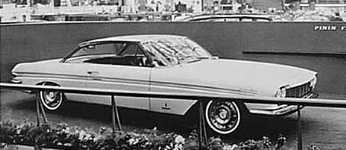
Jacobsen, Dale: [men of GM]
He was associated with show cars, dream cars and executive special cars; he took the place
of Leonard McLay [see below] at GM's Design Center [see CLCA 1994, p.16].
Jergenson, George: [men of
Cadillac] He was an automobile stylist; examples of his work on the 1941 Cadillac styling
development appear in SIA9-10/1976, p.58.
Jet-Away Hydra-Matic transmission:
This was the name given to the famed Hydra-Matic for Cadillac cars from 1956 to 1963. It
was replaced in 1964 by the more reliable, new "Turbo-Hydra-Matic".
Jeweled ads: These superb magazine
ads of the late forties through the mid-sixties were drawn by Canadian-born Eric
Valleau. He also painted scenes for some Cadillac sales catalogs of the fifties.
Eric did most of the Cadillac account work for the La Drière agency.
Jo-block gauges: [see "Johannson Gauge Blocks", below].
Johannson
Gauge Blocks: These special "plug" gauges were imported by Cadillac from
Sweden and first used in the manufacture of the 1907 Cadillac models. The principle was
simple: the first gauge measured 4½" and was marked "4.500 Go", the
other measured 1/1000th of an inch more and was marked "4.502 Not Go".
Engine cylinders were carefully ground to within a tolerance of 1/1000th of an inch (about
the thickness of a human hair!); only those cylinders that accepted the "Go"
gauge but not the "Not Go" gauge were used in the Cadillac engines;
pistons were accepted or rejected using a similar principle; in this case "snap"
gauges of the same tolerances were used; only those pistons around which the
"Go" snap gauge fit perfectly went into the Cadillac engine. This ensured that
ANY Cadillac piston would fit ANY Cadillac cylinder without the need for any machining or
adjustment. Parts interchangeability had begun. The renowned "Jo-Blocks" are
still in the Cadillac Museum, nestled in a wooden box the shape of a briefcase.
Johnson, Frank: [men of
Cadillac] He was chief engineer from 1902 to 1914.
Joliet, Floyd: [men of
Cadillac] He was a designer (CA 12/91, p.22); I was honored to meet him in
September 1994.
Jollymore, Warren R.: [men of
Cadillac] He was Director of Public Relations in the Fifties.
Jordan, Charles "Chuck":
[men of Cadillac] He was born in Whittier, CA [see SIA61, p.29, CA
12/92, pp.38-47, photo of Chuck as young designer in CA 8/93 p.74)], CA
6/96, pp. 6-21, CC, 6/84. Chuck joined GM's styling group as
a novice designer in 1949; Bill Mitchell took the young GM truck designer aside in the
early Fifties and said, if you ever want to amount to anything around here, you better
start designing cars. He subsequently contributed greatly to the design of the
Buick Centurion, in 1956. He was Cadillac chief designer, then GM Design Chief
from 1.10.1957 to 1.8.1962. He retired as GM's Vice-President of Design in 1992. Chuck had
a special fondness for Ferraris and I got to know him well when we traded Ferrari toys and
literature against equivalent Cadillac items. Gita and I were warmly received by him on
our first trip to the USA, in June 1978. It was quite an honor for me to be allowed to
view "secret" designs and mock-ups of Cadillacs in preparation for the eighties.
It was equally an honor to be invited to park our pickup-camper on the grounds of his
beautiful estate in an elegant Detroit suburb.

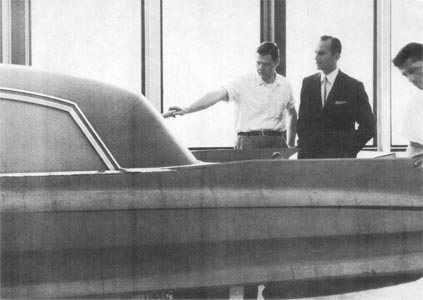
Right: Jordan in the Cadillac Styling Studio in the
late fifties, supervising
the preparation of a clay model of the 1961 Fleetwood "75" limousine
Gita and I have fond memories of our first
visit to the USA when we were warmly received by Chuck ...he even had us eating our
campers'' sandwiches off the corner of his huge, mahogany desk in his executive
suite. What a guy! We had bought for our trip a 78 Dodge pick-up/camper, which
we had specially ordered from Switzerland to be fitted with the mandatory steering wheel
lock for that country. We were aghast when it was delivered to us in Baltimore
without the requested device, which meant we might not be able to license it in
Switzerland. We mentioned this to Chuck, in passing. Of course, he made some
rude comments about Chrysler products in general but he saved the day with a simple phone
call to his counterpart at Chrysler, Dick Teague. Dick said to "bring it on
over" and he would "have his boys fix it". That very afternoon
we drove the Dodge over to the Chrysler compound. Chuck had to stay outside, at the wheel
of his [fabulous] prototype Pontiac Trans-Am wagon, until I was driven back to the main
gate in a livery auto. A couple of hours later, the camper was returned to us,
complete with a new steering wheel ...compliments of the Chrysler Corporation. Thanks
again, Chuck.
Judkins, J.B. & Sons:
Custom coach-builders of Merrimac, MA. They created some bodies for the Cadillac.
Jump Seats: Two, wide
auxiliary seats that folded into the division partition or the rear of the front seat and
could accommodate up to 3 adults in relative comfort for long-distance travel. They were
fitted in a number of the larger sedans, limousines and touring cars [see also "Opera Seats"]. The 1930 color portfolio of
Fleetwood models describes these seats as being "...extra wide and set close together
to form a settee which will accommodate three persons."
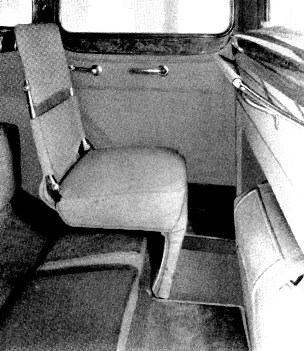 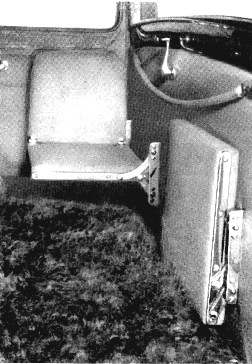
Two different styles of auxiliary seating for the
larger sedans and limousines:
(left) Full size, fold-away "jump seat" with full back rest
(right) lightweight, fold-away "opera seats" (LH faces right, RH faces rear)
"Just Once in the History...":
Title of a 1934 product brochure.
K K K
K K K K K K K K K K K
Kady, Wayne: [men of
Cadillac] (...yes, Rusty, it is spelled with a "K") He was chief designer starting on 1.9.1974 (CA 12/91, p.22) through
1984 (1986?); I met and spoke to him in September 1994. He was head of the Advance Studio
from 1971 to 1973, during the design of the "Hooper-Daimler" 1975 Seville
project; he then went to Buick.
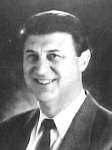
Kaiser-Darrin:
"Dutch" Darrin made a limited-production sports car of which some had Cadillac
engines [e.g. the model ordered by the wife of Briggs Cunningham]. A story and photos can
be found in SIA11-12/1970, pp.14-18, MT 4/55, p.57; SIA11-12/70,
pp.14-18.
Kaptur, Vince; [men of
Cadillac] He headed the Engineering Styling Studio under Fleetwood president E. Schebera;
he participated in the design of the "Madame X" V16 models; he retired from GM
in 1981 as Director of Automotive Engineering and Development.
Kay, Mary: Why, do you
rightly ask, would Mary Kay have her name in "The Cadillac Database"? Well, she
is a lady entrepreneur who began her own cosmetics company in 1963 and gradually turned it
into a sales force of more than 475000 women. The best of these saleswomen, the directors,
all receive a pink Cadillac as a token of the CEO's appreciation.
Keeler, Fred: [men of
Cadillac] He was a pre-WW1 body engineer, before stylists and designers came on the scene
[article in CC&CC 9/1982, pp.26-27].
Kellner, Alexis: A German
coach-builder; he built at least one convertible sedan or landaulet on the 1928 Cadillac
chassis [photo in custom album].
Kellner, Jacques (Georges ???):
French coach-builder, of Paris, France; he did a town car proposal on the 1928 Cadillac
chassis [see CLCA 1989, p.10]. He built also a fully collapsible Town car on the
1930 V8 chassis for the Rothschild wine-growing family. It was discovered and acquired by
U.S. collector J.C. Leake in the late Seventies and fully restored in his body shops. It
later joined the Imperial Palace collection in Las Vegas [photos CCI, 31:5]. A
similar body was built on the 1930-31 V16 chassis [photo in the French magazine
"Vu"]; I have no record of the current whereabouts of the latter.
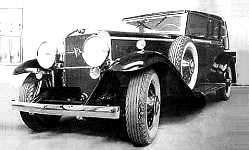
Kennard, Edward C.: [men of
Cadillac] He was general manager starting on 4.11.1974.
Kettering, Charles Franklin:
[men of Cadillac] He was the Cadillac engineer responsible inter alia for
developing and perfecting the first truly reliable electric engine starter which did away
with manual cranking: the self-starter; a small portrait of Kettering can be found in the
Japanese Cadillac catalogue for 1987, on p.16. He came to Cadillac from the Dayton
Engineering Laboratories Company, which he had organized and which later earned a
world-wide reputation under its acronym "DELCO". He had developed the coil
ignition system that did away with the former magneto, and sold it to Cadillac in 1910.
The self-starter brought Cadillac the Dewar Trophy for the second time and earned
Kettering directorship of GM's research laboratories [good photo in McC, p.49;
1935-36 photo with Alfred P. Sloan in 1937 Swiss GM booklet, p.8]. Kettering is reported
to have said one day that he was not much interested in the past because the future was
where he was going to spend his time!
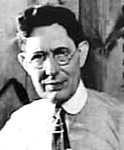 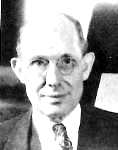
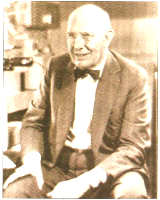
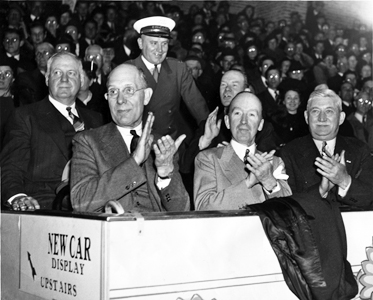
"Boss Ket" at the Chicago Auto Show in
1933
Keyaerts, Robert: A Belgian
engineer/businessman who became wealthy in the seventies and eighties with a patent for
chrome-plating aluminum and similar alloys. In 1984 he became an avid collector of
Cadillacs, building up a superb collection in just a short space of time. After his death
in 1990 [???], his daughters Magali and Geneviève founded the Robert Keyaerts Cadillac Museum
of international repute; it is housed in the Château de Planchoury, at Langeais in the
Loire valley, in France. On display is a broad range of Cadillacs from the twenties
through the eighties, including some very fine classics.
An article about the collection appeared in NIT123, pp.38-43; also EUR
11/91, pp.12-15. I "walk-in" public, but only on invitation or pre-arranged
group visits (auto clubs, etc.)
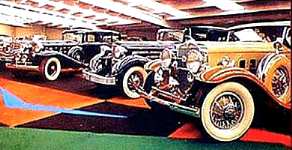 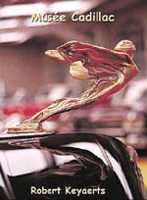 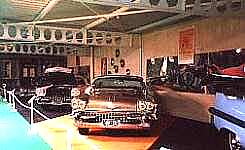
Left: the classic thirties with, inter alia,
a '32-V16 in the background, a '33-V16 center
[said to have belonged to Marlene Dietrich] and a '31-V12 in the foreground [said
to have
been owned by James Cagney].
Center:
Cadillac "Goddess" from museum's 1933 V-16 Town Car [from its web site]
Right: the
fifties too are well represented; here are
three models from 1958. All photos are courtesy of Magali and Genevieve
Keyaerts

A collection of classic Cadillacs before the Château
de Planchoury in Touraine, France, home to Magali & Geneviève, owners of the Musée
Cadillac Robert Keyaerts
Khalid, Ibn Abdul Aziz: King of
Saudi Arabia; he was among many of the country's rulers to favor the Cadillac for personal
transport.
Kick pads: [see "Cowl quarter panels"].
Kline [or Klein???], Chris:
[men of Cadillac] He was chief GM sculptor [see CA 12/92, p.12]. He designed the
beautiful hood ornaments and other details of the '48 and other Cadillacs.
Knee-Action Wheels/Suspension:
In a Cadillac product brochure entitled "To the Advancement of Motor
Transportation", dated 5 Feb. 1934, the new "Knee Action" front suspension
was thus described: " (...) since each front wheel is independently sprung, you
can hit a bump with one wheel without disturbing the other wheel - hence the name
'KNEE-ACTION' (...) smoother riding makes smoother, easier steering (...) protects the
vital units of the chassis from undue stress, strain and vibration".
Knight, William J. "Bill":
[men of Cadillac] He headed Cadillac's Public Relations Department in the Seventies and
was very helpful in helping to prepare the groundwork for this database.
Knudsen, Semon E. "Bunkie":
[men of Cadillac] Probably one of the greatest divisional general managers ever to serve
at General Motors, he died on July 6, 1998 at the age of 85. He was the son of William
"Big Bill" Knudsen, of Danish descent, GM President from 1937. As a young man,
Knudsen Jr. drove a custom-bodied 1936 V8 convertible coupe with completely disappearing
top, chrome hood vents, skirt-mounted rear wheel cover, etc. After graduating with an
engineering degree from M.I.T. in 1936, Knudsen went to work almost immediately for
Pontiac. For 10 years, he worked a series of jobs in the plant. In 1948, he took a GM
corporate job directing early efforts at automation, then went to Allison Division in
Indianapolis as general manager, then to Detroit Diesel in the same capacity. He Joined Pontiac Division in his father's footsteps on
1.7.1956 at 43 years of age; he took over from George Delanay, "father" of the
Pontiac V8 and stayed with the division until 1961; Semon's first "scoop" was to
delete the silver streaks that had been a Pontiac trademark since the mid-thirties. He
spent the next four years with Chevrolet. He took on John Zachary De Lorean to head
"Advanced Engineering" (De Lorean had been previously with Packard and
Chrysler). Knudsen's market was America's youth; he said "you can sell a young man's
car to an old man but not an old man's car to a young man." He was replaced by Ed
Cole in 1962 [???]. See "Bond" 44, 10/92 [also photos, TQ, 5-6/87,
pp.13-15].
Knudsen, William Signius Poul
"Bill": Father of Semon "Bunkie" Knudsen was born in Denmark
in 1879. Bill Knudsen was the former right-hand man to Henry Ford at time of launching of
Model T. He was 43 in 1922 when he joined Chevrolet, a group he later headed from
1924 to 1937. He was President of Pontiac Division in 1932-33, Vice-President of GM in
1933 and GM President from 1937 to 1940. A special 1938 Cadillac V-16 fast-back was built
for him by Fleetwood and probably he used it during his term as GM chief executive [photos
in V16 collection - car still exists today]. A note on a photo I have of the first V16
Aero Coupe built in 1933 states that it was built also for him [could there be confusion
between the 1933 and 1938 models?]. In 1940, then President Rooosevelt asked
Knudsen to come to Washington to help with war production; two years later he was
commissioned a Lieutenant General in the U.S. Army, the only civilian ever to join the
Army at such a high initial rank. He worked as a consultant and troubleshooter for the War
Department, which he served until June 1, 1945.
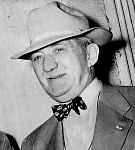 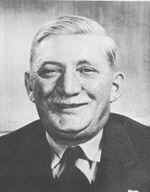
Köng, Walter: A Swiss
coach-builder from Basel, he converted some Cadillac ambulances in 1959, 1960 and 1963
(1963 photo in book "Histoire de l'Automobile", published by Atlas [seen
in HW collection].
Korean War: The war effort
saw a drop in the quality of materials and finish of American automobiles, including the
Cadillac, in the early Fifties.
Kornas, James: [men of Cadillac] He
was director of market assessment, Cadillac Motor Car Division (1980s).
Krause Publications: A US
publishing house specializing in automotive publications.
Kurtis, Frank:
The Kurtis Sports Car Corp. of Los Angeles, CA built twenty units (20) of the 500M 2-door,
2-seater, sports car using the 1955 Cadillac motor (or others on request); it had a
fiberglass body by McCulloch Motors (of outboards and lawn-mowers fame ???). With its 135
mph top speed, automatic transmission, V8 engine developing 250HP at 4600 rpm it was
guaranteed to out-perform any other sports or stock car on the road at the time. In 1989
surviving examples in good condition were rated at $50,000-80,000 [small photo and story, CLCA
1975, p.7; story of "Creative Customs", SIA58, pp.20-23].
L L L
L L L L L L L L L L L
L L
La Espada: Spanish for
"The sword"; this was a 1954 Motorama model [see CLCA 1978, inside front
cover and SIA 21, p.28]; I also have original photos from J-M. Roux collection,
8/94.
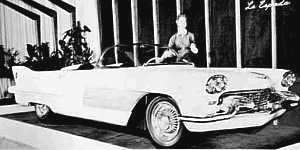
LaNeve, Mark: [men of Cadillac]
Cadillac General Manager in the New Millennium
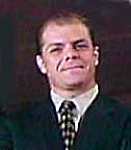
La Grande: French for "The Big
One". This was a pre-war Duesenberg model designation "borrowed" by
Cadillac for a post-war Cadillac V16 proposal [see SIA 8/1981, p.28].
La Salle: The headline story
of 1927 was Lindbergh's solo flight across the Atlantic, from New York to Paris. It only
slightly overshadowed the introduction of Cadillac's "sister car", the new La
Salle [see section: on La Salle - also MH, p.466.]
La Salle, [René Robert Cavelier,
Sieur de]: see "Cavelier, René Robert"
Lacquers (quick-drying):
These were introduced in 1924 and considerably speeded up body production
Laidlaw (top and interior materials):
Laidlaw grew out of the efforts of William R. Laidlaw (great uncle of Stuart
Laidlaw, a professional restorer in Angels Camp CA) who began in the trade about 1908.
From what I am told about him and his enterprise, his headquarters were probably in New
York (NY was quite a center for a lot of the coated fabrics and textile trade during the
teens through thirties), where Laidlaw functioned as an importer for the Burbank
enterprise in the U.K. As such, he offered Burbank upholstery, topping and side curtain
materials into the mid thirties. Whatever business they were doing with these products
seems to have vanished with the onset of WWII.
Lapel pins (buttons): There
is an article on automotive lapel pins in CC&CC, 8/1986, pp.48-49.
Lancehead (raised) panel: A
coach-builders term describing the raised and pointed panel pointing forward on the cowl
of some Fleetwood custom bodies. It was generally matched by a second, curved panel
running from the radiator back across the hood and down to the body sill, following the
curve of the side-mounted spare wheel [see GH, p.5].
Lancefield Coachworks, London:
UK-based coach-building firm. They fashioned at least one body on the 143" wheel base
V12 chassis for 1930-31. It is illustrated in a rare literature item issued in 1931 by the
UK Cadillac dealers, Lendrum and Hartman in London. Commissioned by Captain F.W. Hartman
[anything to do with Lendrum & Hartman ???] and Major E. Howard, it was finished in
primrose-yellow with a black roof and fenders. The notable styling features were the
slender windshield posts for the slightly slanting, flat windshield, the cycle fenders
front and rear, the four doors stretching down to cover the body sill, the rear
"suicide" doors, the step plates that opened with the doors, a removable section
over the comfortable and roomy driver compartment, designed for the owner-driver.
Landau or Landaulet: The word
derives from the name of the German city of Landau. It was used in earlier times to
describe an open, 4-wheel, horse-drawn carriage with front and rear suspension, having two
opposite-facing seats aligned in parallel to the wheel axles, and one or two folding tops
for both the front and the rear seats (in France the term "landau" describes an
infant carriage - a pram - with a folding top). In automobile parlance, a
"landaulet" described an automobile in which the driver's compartment was
separated from the passenger area by a fixed or mobile glass division. In the 1929
Cadillac sales catalogue the "landaulet" is described as a car in which the
"...full leather top, back and rear quarters fold back from level with the rear door
hinge ("C") pillar]. This was generally a formal body style with a leather or
cloth roof portion over the rear seating area that could be folded back to afford the
occupants the pleasure of an open air ride. Landaulet feature (folding roof) was reserved
mostly for town cars although it was used also occasionally on sedans and limousines. The
folding rear roof was first used by Cadillac in 1914. The name was used formally in 1924
(I have an ad from July 1924 illustrating Cadillac's new, "Landau" style, a
large formal sedan with oval quarter windows and false landau bars).
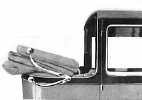
Landau bars,
irons, joints (or "carriage bows"): These could be functional or purely
decorative; they are to be seen on many formal sedans and limousines fitted with a leather
roof covering. They could be painted, nickel-plated or chromium-plated according to
customer preference. When functional, they formed an integral part of the folding
mechanism for all or part of the roof covering. The decorative irons were attached to the
rear roof quarters whereas the functional ones reached down below the belt line as in V-16
styles 4108C, 4225C, etc. Some folding tops featured concealed bows [see CC, Spring
1968, page 49].
Landau design and operation:
Correct placement of landau joints required application of precise mathematical formulae.
A fine example is to be found in the French trade magazine "L'Auto
Carrosserie" on p.342 [which issue?]
Last (Cadillac) convertible: Story
and photos in CLCA 1988, pp.10-13. No sooner had the "last" Cadillac
convertible come off the production line than a dozen or more companies set up business to
offer them in Cadillac's place. Among them was the American
Custom Coachworks (ACC).
Laumet, Antoine, a.k.a. Antoine de la
Mothe Cadillac: The French explorer-adventurer whose name was taken for the
Cadillac automobile. He was the founder of a trading post on the narrows between lakes
Eire and Michigan which he named "ville d'étroit", or "town on the
narrows", later shortened and deformed to Detroit. There is a short historical
summary in SIA91, p.42 and in "Bond" [in French].
Lawson, George: Men of
Cadillac; he was a body designer.
"Leaping the Gap":
The title of an early Cadillac advertisement featuring a 1905 Model E - artfully disguised
as a 1906 tulip-bodied runabout - "leaping" through the air between two special
ramps erected in the Los Angeles Agricultural Park for that purpose; the stunt was
performed by one daredevil "Doctor Carver" and repeated many times to illustrate
the strength of the small car. The company seized on a press photo and report of the event
published in "Automobile" for 8 March 1906 and dreamed up an impressive ad for
its 1906 models.
Leather roof: Many body
styles were offered with a full or partial leather roof covering. On request, a customer
could request the addition of a leather roof covering on a body style normally delivered
with a lacquered metal roof. Likewise, he could request also that a formal body style be
delivered without the standard leather roof covering, if that was his preference. In such
cases the job or body style number would have an "A" or "B" suffix to
indicate a deviation from a standard style.
Le Baron:
Raymond Dietrich and Tom Hibbard started the Le Baron company in 1920, selling design
ideas to be built by other coach-builders. Le Baron built a special Sport Phaeton body on
the Cadillac Series 314 chassis for the 1925 New York show [see MH article in CC,
9/82, p.27]. The so-called "Le Baron" hood design of which Cadillac used a
modified version on the 4300 series V16 body styles of 1930-31, featured a long, rakish
raised panel sweeping from the radiator back into the front door then back forward at sill
level; the depressed area marked off by this beading was generally painted a lighter color
[photo in GH, p.4].
Lee, Don:
The Los Angeles Cadillac dealer and custom body builder in 20s and 30s; his
premises were located at 7th and Bixel in Los Angeles' Hollywood area; a photo of the
entrance can be seen in CLCA 1977, rear cover; a Don Lee special custom body for
the 1920 V63 appears in CLCA 1978, p.12; another Don Lee Touring Sedan appears in
the book "Automobile and Culture" on p.222 [HW collection {***}];
see also the article in AT, 11.7.1931, p.692 {***}and the presentation of the 1933
LaSalle (in CLC 4/93, p.7).
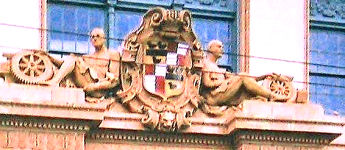 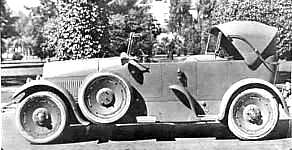
Left: sculpture over the Don Lee dealership in San
Francisco [ Photo © 1999, Yann Saunders ]
Right: 6-fender touring car for actress, Ann May, built on Cadillac
Type 61 chassis; this style
is described also as a "sport formal touring sedan with California top"
Leland & Faulconer Manufacturing
Company: They manufactured the first Cadillac engines.
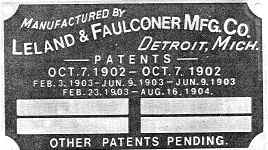 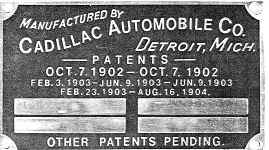
Left: engine number plate for first Cadillac
engines
Right: new plate after founding of the Cadillac Automobile Co. in 1902
On October 27, 1905 the Cadillac Automobile Co. merged with
Leland and Faulconer Mfg. Co to form the new Cadillac Motor Co.
Leland, Faulconer & Norton:
Anterior company to Leland & Faulconer. According to a 1962 publicity piece in the JMR
collection {***}, they brought to the nascent auto-building industry "an intimate
knowledge of precision manufacturing and quality production."
Leland, Henry
Martyn: [men of Cadillac] He was the co-founder of Cadillac Automobile Company in
August 1902; he had been founder, vice-president and general manager of the Leland &
Faulconer Mfg. Co. (where his son Wilfrid was assistant treasurer under William H.
Murphy), a company that supplied the engines for the new Cadillac car. Earlier, he was
with Brown & Sharpe [a machine-tool manufacturer] for 17 years as manager of the
sewing machine department; he became the first general manager, drawing a monthly salary
of $750 [the price of a new Cadillac]. Leland was born in 1843 to a Quaker family in
Vermont; at the age of 14 he started working in a loom works and later, in gun production
at the Springfield armory where he learned precision manufacturing enabling parts
interchangeability; he did a stint also at Colt gun works before joining Brown &
Sharpe's precision machine factory. Known as the "Master of precision",
Leland is remembered more for his exacting requirements than for his hair clippers or the
sewing machines he helped to build. Henry Ford had been involved with the fledgling
Detroit Automobile Company but left after a disagreement with its other partners. They had
called on Leland to appraise their assets with a view to liquidating the company but
Leland sold them on his 1-cyl. motor, built at the Leland & Faulconer works. Reformed
as the Cadillac Automobile Company, production of the single-cylinder model began in late
1902. Article in AT 14.1.05; photo with 1906 touring car, Motor Trend, 100th
anniversary number, p.27; see also CLCA 30th anniversary issue, p.70; in meeting,
photo, CLCA 1979, pp.8; more reading: article "Spirit of the Marque",
by Marion George, CC 2/1977, p.25 (includes a photo of Leland on horseback). He was
general manager from 27.12.1904 to 1.6.1917. Leland passed away, aged 90, in a Detroit
hospital in 1932. See also "Car Collector", 3/97.
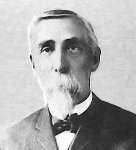 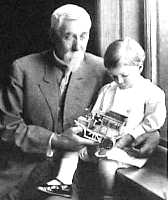
RH photo: Leland with grandson, Wilfrid Jr.
and 1910 (?) toy Cadillac
Leland, Wilfrid: Son of Henry
Martyn Leland who worked in partnership with him at Cadillac.
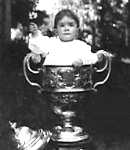 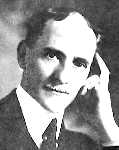
(Left) as a child, in 1909, Wilfrid fit perfectly
in(to) the Dewar Trophy cup, that Cadillac had won the previous year
(and again in 1913, for the electric starter and lights on the 1912 models)
Leland Award: The
Cadillac Motor Car Company announced at the Grand National Award Banquet, in Newton, MA,
in August 1989, that it had established the Henry M. Leland Award, to be presented
no more than once yearly to an outstanding Cadillac LaSalle Club members. Nominations by
CLC members themselves are reviewed by the club's current and past Presidents and must be
unanimously approved by them. Nominees are selected for their "acts of great
merit including preservation and or research of Cadillac LaSalle history or outstanding
service in furthering the aims of the Club." Described erroneously as a
replica of a 1908 Cadillac, the trophy depicts in actual fact the Model K
"tulip" body runabout of 1906-1907. It was in 1908, in fact, that the 1907
Cadillac Model K won for the Cadillac Motor Car Company the Dewar Trophy, presented
annually by the Royal Automobile Club (RAC) of Great Britain to the auto manufacturer
whose cars had made the greatest technological advances in the previous year; in
1908, the Cadillac Model K had demonstrated total interchangeability of parts.
The Leland trophy consists of 80 different brass and pewter pieces assembled and gold
plated. It stands on a tinted mirror affixed to a walnut base and carries a plaque to be
inscribed in the name of the year's winner. Ansel Sackett, CLC co-founder and
treasurer for three decades found these scale models in the possession of the Cadillac
Motor Car Division in the mid-eighties and was able to persuade the company to donate them
to the club. The fist winner (in 1990) was Norman E. Jones of Tulsa Oklahoma; he
received the award at the 1990 Grand National Awards Banquet in Carson City, Nevada;
Norman joined the club in the mid-Sixties; he was recommended by CLC members Paul
Dennison, Bob Slaughter and Houston Hubbel. The second winner (in 1991) was Hollis
Weihe. The third (in 1992) was the late Ken Moss, aka "Mossie", "Mr.
Cadillac of Australia" and "Cadillac Dundee"; it was presented to
him on June 13, 1992 at the Grand National Awards Banquet in Phoenix, Arizona; a report on
that presentation is to be found in CLC 8/92.. There were no nominees in 1993 or 1994 (see
CLC, 3/94, p.9). In 1995, the recipients were Richard and Bea
Snyder of San Diego, CA (CLC 9/95, p.3). The following year, 1996,
the trophy went to Dave Holls of Bloomfield Hills, MI; Dave took over the Cadillac
Styling Studio from Chuck Jordan when the latter retired in the eighties. There were no
qualified nominees in 1997 and 1998. In 1999, the recipient was Yann Saunders [yes
folks, that's me!] for his active involvement during the previous thirty years in
preserving and promoting Cadillac cars and making the history of the company and the car
freely and widely available in "The
(New) Cadillac Database" © on the Internet.
More on the Henry Leland award may be found in CLC 9/89, p.3, 5/91, p.9 and
in the 1999-2000 International Membership Directory. p.13. [other CLC awards are described
in CLC, 6/94, p.9].
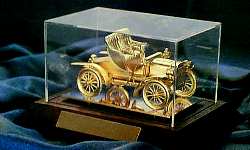
The Leland Award awaits another winner
UNE MAQUETTE DE LA CADILLAC DE 1907
POUR SERVICES RENDUS A LA FIRME
A l'occasion du banquet marquant la
clôture de la rencontre annuelle du Club Cadillac LaSalle [E-U],. M. Jack Waina,
représentant la Cadillac Motor Car Division de la GM a annoncé la création d'une
prestigieuse distinction destinée à récompenser les membres de ce club pour services
exceptionnels rendus. Connu sous le nom du Prix Henry M. Leland [fondateur de la firme en
1901] il est symbolisé par une réplique d'une Cadillac modèle K mono-cylindrique de
1907 à l'échelle 1/18e environ.
Cette auto fut mise au point sous la
direction de Henry Leland, PDG de la marque; on lui decerna l'année suivante (1908) le
trophée Dewar de la Royal Automobile Club (RAC) de Grande-Bretagne pour la parfaite
interchangeabilité de ses pièces. C'était reconnaître le slogan de la firme : "The
Standard of the World" [la norme mondiale].
La maquette, dont un exemplaire fut remis
au Comité directeur du club à l'occasion du banquet, est présentée sur un miroir
teinté fixé sur un socle en noyer comportant une plaquette gravée. Il se compose
d'environ 80 pièces différentes en laiton et en étain soigneusement assemblées puis
plaquées or. C'est un modèle réduit absolument magnifique.
Le prix est décerné une fois l'an au
maximum à un membre du Club Cadillac LaSalle dont on a reconnu le mérite. Chacune des
régions affiliées au Club est invitée à soumettre chaque année le(s) nom(s) du(des)
candidat(s) qui se serai(en)t distingué(s) soit par la restauration ou la préservation
d'automobiles des marques Cadillac ou La Salle, soit par leurs travaux de recherches
consacrés à l'histoire de la firme et à sa production, ou encore pour services
exceptionnels rendus à la firme et au club.
Les nominations sont soumise à examen par le
Comité directeur du Club, lequel fait son propre choix avant de le soumettre à la firme
pour approbation.
_______________________
Nota: lorsque je composai ce texte en 1989, pour la revue de l'American Car
Club de France (ACCF), j'etais loin de penser que je serais lauréat un jour de ce prix
exceptionnel. En effet, il me fut décerné en 1999 pour mes travaux de recherche
sur l'histoire de la marque [voir encadré dans l'Introduction].
|
Le Mans: The world renowned
annual 24-hour road race in the French city of same name. The same name designates also a
1953 Motorama model of which it is believed that 4 units were built (including the
Motorama show car of 1953); one was owned in the Seventies by Jack Goodman, a Cadillac
dealer in Los Angeles (???) [see CLCA 1984, pp.22-25 for good photos of the
instrument panel; also SIA21, p.25. A "Le Mans" custom model (car #1) was
reported to have been destroyed in Pleasanton, CA, on 14 May 197(???) [see photos in CCI,
31:8]. Another (car #3) was converted by customizer George Barris for Marie McDonald, wife
of shoe magnate, Harry Karl. Another conversion (car #4 - modified in 1959) can be seen in
ELD, p.17.
Le Mans (2): Racing enthusiast
Briggs Cunningham entered a stock series 61 coupe in the 1950 edition of the Le Mans
race [it placed 10th overall - report in "GM - the First 75 years",
p.121]. A Cadillac-powered barquette racer, "Le Monstre" ["The
Monster"], was also entered [it placed 11th overall - report in CLCA 1974,
pp.11-13]; good reading: "Le Mans 1950 Photo Archive" edited and introduced by
Robert C. Auten with many exceptional photos by Oliver Smith-Hempstone. Late extra
[1999]: Cadillac announced at the Geneva Motor Show in March 1999 that it would enter a
car in the Le Mans road race, for the second time in fifty years, in the year
2000. An engineless mock-up was shown to the public in the summer of 1999.
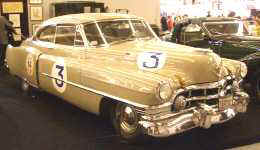 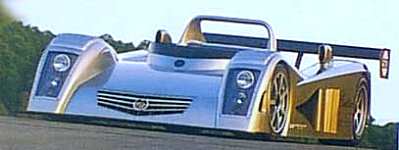
Le Monstre: pseudonym of
Cadillac-powered racer by Briggs Cunningham and Frick-Tappett entered in the 1950 Le Mans
race [see photo in SIA80, p.16].
Lendrum & Hartman: The
long-standing Cadillac-LaSalle sales outlet in London's fashionable Albermarle street at
numbers 26B and C. The director in the thirties, Captain F.W. Hartman, entered many
of his personal Cadillacs in concours d'élégance at home and abroad where he
won many premier awards. Service and maintenance was ensured at Old Oak Lane, Willesden.
Le Sabre: The following
correction was suggested by John Fobian, SAH member #2017: The Sabre
[Fr.], name designation of 1951 GM experimental Buick 2-pass. roadster-type concept car
using a 3500cc engine, powered by a mixture of gasoline and methanol (or methyl alcohol,
not methane) with a Roots [not Rootes] supercharger (Rootes was a British auto
manufacturer, not turbo-charger) and a Dynaflow transmission. It
inspired many post-war Cadillac styling features [see SIA16, pp.22-27; MT,
100th anniversary, p.10; SIA21, p.27. Among its many innovative features were its
heated seats and an automatic top that reacted to a water sensor on the rear deck. It was
shipped to Europe and was seen at the Paris salon in October 1951 where it was
photographed, inter alia, with exiled King Nicholas of Romania and the French actress Suzy
Carrier. It arrived in France and was shown at the salon sporting Michigan tags #AF 80 00;
later it toured France wearing temporary French tags [#3400TT1Y]; a visit was paid also to
Le Mans, the famed racing town in the Sarthe area of France. Le Sabre
was also brought to SHAPE [former Supreme Headquarters of the Allied Powers in Europe];
there it was shown to General Dwight D. "Ike" Eisenhower. The car is currently
[1993/94] in the Ford Museum, in Dearborn, MI, USA. This car is featured in an article in MKT
1/89, p.28. The Le Sabre coach, in Switzerland, is mentioned in SIA17,
7/73, p.8]; also see SIA158.
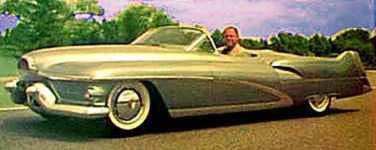
Letters re Cad-LaS: SIA61,
p.9 (re SIA60, p.35).
Levin, Peter R: [men of
Cadillac] He was Director of advertising (1993).
LHD (left hand drive): This
was made standard by Cadillac on the 1914 models; prior to that all Cadillacs had RHD
(right-hand drive).
Liberty engine: An airplane engine
using Cadillac parts, manufactured in WW1; the first one was ready for delivery on 4 July
1917; the first tests took place on 2 February 1918; the first engine was completed and
tested on 13 May 1918. Cadillac got an order for 10000 Liberty engines from Ford Aircraft
Division (facts from 1919 book "Cadillac Participation in the World War".
Licenses, vehicle: In today's day
and age the "Automobile License" of pre-WW1 days has given way to the
"Vehicle Title". Change of terms, but same basic purpose, i.e. to keep a record
of all vehicles on the road by make, model and VIN. Here's an oldie from West
Virginia for a 1921 Cadillac.
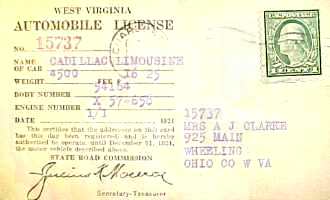
Licensing and trademarks (Cadillac):
[see "Trademarks and Licensing"].
Life: Quality pre- and
post-war US magazine that occasionally featured nice Cadillac-LaSalle ads.
Limit gauges: Used by
Cadillac at the beginning of the century to improve tolerances to 1000th of an inch; based
on the go-not-go principle; for example, a piston had to "go" into one gauge but
not into the next; if it did not fit the "go" gauge it went for further
grinding; if it went into the "not-go" gauge, then it was over-ground and
discarded. These gauges are not to be confused with the Jo-blocks or Johansson gauges
which were simply used to check the accuracy of the limit gauges.
Limited editions: In the
post-WW2 period Cadillac complemented its standard line of cars with a number of special,
limited editions. Most of these were stock production models with a "options
package" that set them aside from the pack. Among these were the Brougham package, on
the Sixty Special in 1965. The Fleetwood Sixty Special Brougham (also referred to as the
Fleetwood Brougham) became a part of the "Series 60S" model line-up in 1966;
since the regular Sixty Special was dropped after 1970, the latter model eventually became
the only Fleetwood Sixty Special available. The "d'Elegance" packages on the De
Villes and Broughams in the '70s are another example. Introduced on the Brougham in 1973,
they also became available on De Villes in 1974. Of particular note was the Talisman
luxury package for the 1974-76 Fleetwood Broughams ; it offered crushed velour
"Medici" cloth upholstery (or leather, in 1974) and wide, comfortable arm-rests
creating two luxurious lounge chairs, front and rear [info: Ruben Baeten, 10/1997].
Factory "custom" Caddies include also the 1973 Indianapolis pace-car package,
the 1976 commemorative Eldorado Convertibles, the 1977 Eldorado Custom Biarritz, De Ville
and Brougham d'Elegance packages, the 1978 Eldorado Custom Biarritz; Seville Elegante, De
Ville and Brougham d'Elegance and Coupe/Sedan Custom Phaeton (same in 1979), the 1980 De
Ville and Brougham d'Elegance, Coupe de Ville Cabriolet, Eldorado Cabriolet, Eldorado
Biarritz, Seville Elegante (same from 1981 through 1984). 1982 through 1985, and 1990
through the present saw the Eldorado Touring Coupe, 1988 through the present saw the
Seville STS, 1985 through 1991 saw the Eldorado Biarritz, 1985 through 1991 saw the
Seville Elegante, 1986 through 1988 saw the Fleetwood package, 1988 saw the Fleetwood
Sixty Special, 1986 through 1987 saw the De Ville Touring Coupe/Sedan. These models were
standard cars with a special "options package". A few were separate models in
some years [info: Craig M. Seman, NC, 10/1997].
Limousine: from the French limousin
and limousine, belonging to or originating in the French town of Limoges, more
famous for its porcelain tableware than for these early luxury horse-drawn carriages and
chauffeur-driven automobiles. Cadillac's first fully enclosed, chauffeur-driven limousine
was built in 1914; previously these cars had been open or partly open in the driver area.
The limousine generally differed from the sedan in having a glass partition or division
between the front (chauffeur) and rear (owner/passenger) compartment. Early partitions
were fixed and the rear-seat occupant could hail the driver through a microphone and horn
speaker; other partitions had a hole drilled in them. Later partitions were in two parts
that slid open to left or right; others wound down into the partition by means of a crank
or, later, an electric motor.
"Limousines at the
Broadmoor": Title of an article on stretched Cadillac observation coaches
in CLCA 1976, p.10-17.
Literature and books (1):
[Addresses for]: - Doc' Auto, 70 rue Laugier, 75017 Paris (43.80.84.99) - ask for Chantal
["Bond" 45, 12/92]; Brentano's, 37 Av. de l'Opéra, 75002, Paris (42.61.52.50 -
Fax 42.61.07.61) [sells "Collectible Automobile" and "Car Collector"].
Literature and books (2):
There was an article on private collections in CC&CC 6/1985, pp.52-54.
Literature collectors: This
is the address of an automobile literature collector in the UK [found in Collectible
Automobile]: Craig Jones, 10 Llys Coch, 47 Cowbridge Road West, Cardiff, Glamorgan, Wales
CF5 5BQ.
Little, Dennis: [men of
Cadillac] He was chief of design at Cadillac Design Studio from 1991 on...
Little
Hercules: This was the name given, circa 1904, to the early Cadillac 8.25HP
single-cylinder motor used in both the Models A and B).
Live steam: It was used to
increase automobile engine power [see CLCA 1975, p.36].
Livery (1) : In the early
days of enclosed car motoring many owners employed chauffeurs and sometimes also a
footman. Proper livery (or clothing) for the chauffeur enhanced the general appearance of
one's automobile. Double-breasted suits were considered correct apparel as were breeches
with puttees (far smarter than trousers). Caps were a must, and cap protectors were needed
in cars with open front chauffeur compartments. Typical chauffeur livery is to be seen in ML,
10/1916, p.48.
Livery (2): Russell
"Rusty" Shepherd beat me to this entry [1999]. He wrote "Cadillac
also had livery trim in its long-wheelbase cars. This trim was less luxurious than the
regular Fleetwood limousine. From 1938 to 1940, livery trim was available in the Series 75
V8 but not in the Series 90 V16." Look for an "L" in the body styling
code. The letters "LL" would indicate "Livery" trim and
"Leather" roof covering.
Lockheed: An U.S. airplane
manufacturer; Cadillac built parts for its Allison engines [see "P-38" etc.].
Loewy, Raymond: French
automobile designer responsible, inter alia, for the beautiful Studebaker Avanti.
Mr. Loewy designed at least one body on the Cadillac chassis for 1959. Read his obituary
in "Car Collector", 10/86.
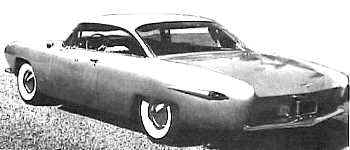
.
London-Brighton: This is an annual
road racing event for automobiles from 1904 or earlier. Cadillac cars are frequent
participants as, for example the 1903 and 1904 models below that participated in the 1994
edition. For a report on that race, see CLC 7/94, pp.10-11.
Longest Cadillac: Claims
relating to the "longest" Cadillac in the world keep pouring in. I will mention
one built on four wheels by/for singer Gino Dantie: a 13.5 meter, 5200 kg, 25-passenger
record-breaking limousine. All its doors open electrically from the driver's seat, it has,
of course, a wet bar, silver service, 4 phones, video, etc.
Loop Films (Training): These
were used by Cadillac in training their sales representatives. They were used in
combination with recorded sales presentations (discs). I have no idea when they first came
into use or for how long they were used as sales training aids. In the Eighties, I
acquired from a Texas literature vendor a dozen of them (films and records, some in color,
some in B&W) covering the period from the mid- to the late-Fifties.
LSE: The initials of a
Cadillac show vehicle of 1994. "LSE" = Luxury Sedan - Eurostyle. It was
engineered for luxury and efficient space utilization; the LSE boasts more passenger
comfort and trunk volume than other competitors in the entry-level luxury segment; this
show vehicle was built through a collaborative effort between Cadillac and GM of Europe.
It is targeted to broaden Cadillac's appeal to young affluent buyers. Its planned
introduction is 1996. It is a uni-body, 4-door sedan with a highly raked front grille,
rounded fenders, curved roof line, single piece wrap-around rear fascia, wedge-shaped sail
panel. The high-power DOHC 24-valve, 3-liter, V6 engine delivers more than 200 HP and the
car has rear wheel drive and an electronically-controlled 4-speed automatic transmission,
4-wheel independent suspension, seating for 5 and a sporty design. It follows on the
Cadillac Aurora concept vehicle. Engineered and manufactured by GM Europe at the GM
Technical Development Center, Russelsheim, Germany, the LSE was shown at the 1994 Detroit
Auto Show as the 1997 Catera, based on the rear-drive Opel Omega whose front styling is
like that of the LSE show car but has full length tail-lights and narrow LED brake light
[see CLC 2/94, cover + pp.4-5].
On the subject of the LSE, another article was
entitled "Turning an Opel into a Cadillac. GM goes global". A letter to
the editor [ZTV collection], from a Mr. Richard Stout, formerly of GM's styling
section, who lives in Delray Beach, Florida, had these unkind words to say about the new
concept vehicle: "LSE does Cadillac's final disgrace. When do we see a Cadillac
minivan and pickup truck? Your February 28 article entitled 'Clinics pan LSE rear, so
Cadillac revises it' is distressing beyond belief. As Cadillac sinks lower and lower we
for ever hear the business school "entry-level" term and the frantic appeal to
the younger folk, presumably infants. Anything with the Cadillac name is supposed to be
built in the Cadillac manufacturing plant by what we considered Cadillac craftsmen, and to
the once meaningful standards implied in the 'Standard of the World'. General Motors seems
dead set on destroying the last meaningful remnants of its brand names. Has GM noticed
during these last ten years that sales fell, frighteningly I should think, for lines
subjected to badge engineering. The 'quote' entry level 'unquote' LSE may be
the final disgrace to the once prouder Cadillac name."
Luggage rack (roof mounted):
Cadillac built custom V16 Town Car with an integral luggage rack in 1936 for a reported
$17,000 !
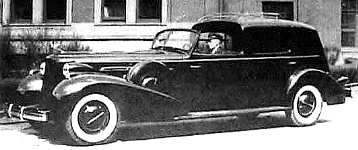
Lund, Robert "Bob":
[men of Cadillac] He was former General Sales Manager, Chevrolet, and became Cadillac
General Manager on 1.1.1973 up to 4.11.1974 [he was succeeded by Edward C. "Ed"
Kennard in 1974].
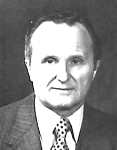
Lutz...: [men of
Cadillac] >>>>>>>
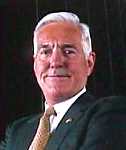
|